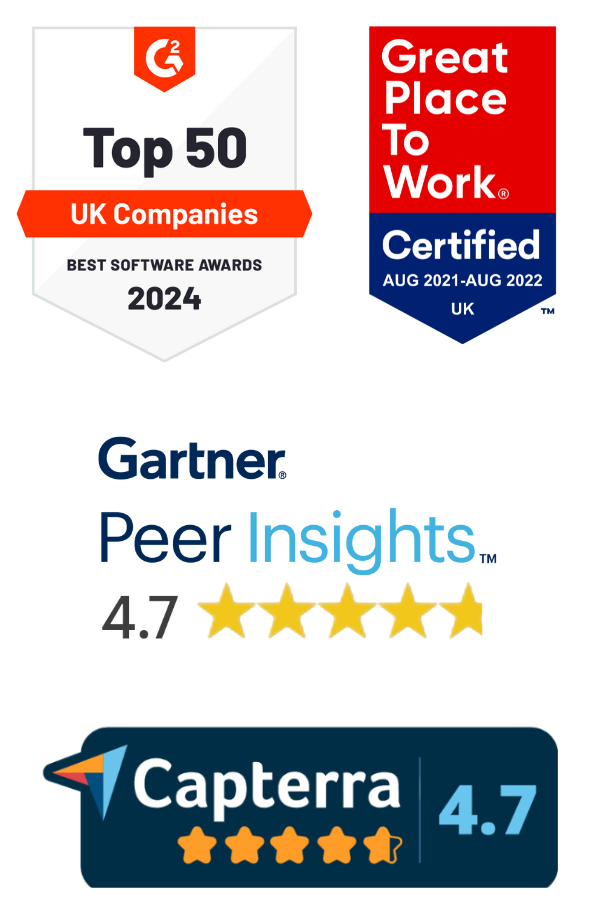![How to Run an RFP for Employee Advocacy Software [Podcast] 1 EP66 thumbnail](https://dsmn8.com/wp-content/uploads/2025/08/EP66-thumbnail.jpg)
[Episode Sixty-Six of ‘The Employee Advocacy and Influence Podcast] 🎧
Running an RFP for employee advocacy software can feel like navigating a minefield of buzzwords, feature lists, and flashy demos. In this solo episode, Lewis shares a clear, structured approach to help you avoid common pitfalls. Whether you’re starting from scratch, replacing an underperforming platform, or consolidating tools, this episode will help you clarify goals, engage the right stakeholders, and confidently compare vendors. Drawing from past podcast guest insights and real-world case studies, it’s packed with practical takeaways.
What You’ll Learn:
- Why defining RFP goals early is crucial for success
- The framework for a smooth RFP process
- What to ask vendors before and during the demo stage
- Why “buying the team” matters as much as buying the tech
- How to avoid vendor fatigue and spot red flags early
Define the "Why" Before You Start
One of the most common missteps when running an RFP for advocacy software is jumping straight into feature comparisons without first getting clear on your purpose. In this episode, Lewis stresses that clarity at this stage saves time, money, and frustration down the line. Are you replacing an underperforming platform? Launching your very first advocacy initiative? Tightening up a sprawling tech stack? Whatever your reason, your RFP should reflect that purpose. For example, if your goal is brand awareness, prioritize reach and reporting on impressions. If you’re driving pipeline, then attribution and CRM integration will matter more. Without that clarity, every vendor will sound like the right one, and that’s a recipe for decision fatigue.
Build a Cross-Functional Review Team Early
Choosing an advocacy platform impacts more than just your marketing team. Lewis outlines how the most effective RFP processes involve stakeholders from marketing, sales, IT, legal, and ideally, end users. Including different teams early ensures buy-in, uncovers hidden requirements (like legal guardrails or data integrations), and surfaces usability concerns that only a hands-on user would catch. Referencing Nissan’s experience, Lewis points out how starting with a small pilot group helped them validate the platform’s value before scaling. It’s not just about tech specs, it’s about how the platform fits into your culture and workflow.
Don't Just Buy the Tool, Buy the Team
Tech is only half the story. What sets top-tier vendors apart is their commitment to customer success. As Lewis puts it, “Don’t just buy the tool, buy the team.” He shares examples like Swiss Post, where thoughtful questions about segmentation led to the right platform choice. And Jordan Tenenbaum from Talkdesk underscores the importance of vendor-led education. A vendor who offers onboarding, strategic guidance, and tailored training will help you scale effectively and avoid “platform fatigue” down the line. A good platform with a great support team will outperform a great platform with poor service every time.
Ready to get started with the #1 employee advocacy platform?
Wondering how active your team already is, and how this compares with your competitors?
Learn More About How to Run an RFP for Employee Advocacy Software:
![How to Run an RFP for Employee Advocacy Software [Podcast] 6 Selina](https://dsmn8.com/wp-content/uploads/2024/10/Selina-Profile-Picture-150x150.jpeg)
Selina Sher Gill
Selina has a Master's Degree in Marketing and Brand Management, and is DSMN8's Digital Marketing Executive. She's a pro at creating and editing video content, using these skills to create short-form social media videos and edit the Employee Advocacy and Influence podcast.

![How to Run an RFP for Employee Advocacy Software [Podcast] 2 Listen on Spotify Podcasts Button](https://dsmn8.com/wp-content/uploads/2022/07/listen-on-spotify-logo-11609367646xxolakoqj1-2.png)
![How to Run an RFP for Employee Advocacy Software [Podcast] 3 Listen on Apple Podcasts Button](https://dsmn8.com/wp-content/uploads/2022/07/Listen-on-Apple-Podcasts-badge-jpeg.webp)
![How to Run an RFP for Employee Advocacy Software [Podcast] 4 Watch and Listen on YouTube](https://dsmn8.com/wp-content/uploads/2022/07/Watch-Listen-on.png)
![How to Run an RFP for Employee Advocacy Software [Podcast] 5 How Visible Are Your Employees on LinkedIn? Get a free health check](https://dsmn8.com/wp-content/uploads/2025/06/Banner-Ads-EA-Health-Check.jpg)

